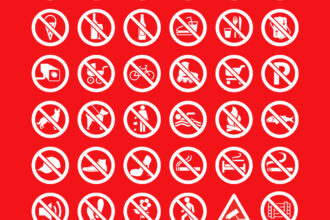The Science and Art of Beauty Product Testing


Table of Contents
Key Takeaways
- Beauty product testing is pivotal in ensuring the safety and effectiveness of cosmetics and skincare items.
- Understand the various testing methods and their importance in validating product claims.
- Learn how consumer feedback contributes to shaping the beauty industry.
- Explore the ethical considerations and regulations surrounding beauty product testing.
Why Testing Matters in Beauty Products
Product testing is the unsung hero for cosmetics and skincare, ensuring both safety and efficacy. It’s a crucial step that validates manufacturer claims, allowing consumers to trust what they are purchasing. The rigorous world of makeup testing involves controlled environments where products are meticulously evaluated for their effects on various skin types. Through these processes, companies can ensure their products provide the promised benefits while minimizing risk to end users.
According to the FDA, product testing is vital for verifying that cosmetics are safe for daily use. This assurance is crucial, as improper testing can lead to adverse effects, damaging consumer trust and the brand’s reputation. Ultimately, these efforts protect consumers and enhance the credibility of the beauty industry at large.
Different Types of Beauty Product Testing
- Clinically Tested: These tests evaluate products under conditions that mimic real-world use. This might include testing in various climates or even different times of day to see how products hold up over time. The goal is to observe long-term effects on human skin and determine effectiveness under various conditions.
- Dermatologically Tested: Products undergo scrutiny by professionals to ensure they are safe and cause no irritation. By observing reactions on different skin types, dermatologists can offer insights into product compatibility, ensuring that consumers experience no adverse effects.
- Allergy Testing: This critical testing type checks for potential allergens. Given the diversity of skin types, these tests focus on understanding and preventing allergic reactions. Through rigorous evaluation, companies strive to make inclusive products that cater to even the most sensitive skin.
Each of these methodologies contributes to a comprehensive understanding of a product’s performance, giving brands insights to create safe, efficient products.
The Role of Consumer Feedback
In the beauty industry, consumer feedback is invaluable. It acts as a compass, guiding brands towards improvements and innovations. Feedback highlights consumer likes and sheds light on areas needing attention. As noted in Forbes, amplifying consumer voices can significantly enhance product development and marketing strategies.
Feedback systems enable brands to rapidly adapt to market demands, resulting in products that resonate with users on a deeper level. This interaction builds better products and stronger brand loyalty, as consumers feel heard and valued.
Ethical Considerations in Product Testing
Consumer demand for sustainable and cruelty-free products drives the trend toward ethical beauty product testing. This has spurred innovation in testing methodologies, minimizing harm to animals and the environment. Leading companies are pioneering these methods, setting new industry standards that reflect quality and ethical considerations.
Beyond avoiding animal testing, ethical practices now include reducing environmental footprints through sustainable packaging and responsible ingredient sourcing. Such efforts align brand values with consumer ethics, strengthening relationships and ensuring long-term success in a competitive marketplace.
Understanding the Regulatory Framework
Beauty products are subject to rigorous regulations that ensure they meet safety and marketing prerequisites. The intricacies of these regulations can vary significantly between countries, posing challenges for global brands. In the European Union, for example, regulatory standards are well-known for their strict nature, aimed at protecting consumers through comprehensive safety assessments and detailed ingredient disclosure.
Comprehending these regulatory challenges is essential for cosmetics brands looking to thrive internationally. Ensuring compliance can enhance consumer trust and broaden market reach, as adherence to strict regulations is often seen as an indicator of higher quality and safety.
Innovation Spurred by Testing
Testing confirms a product’s current efficacy and inspires future innovations. By understanding the strengths and weaknesses of existing offerings, brands can pivot their strategies to focus on unmet consumer needs. Such insights are invaluable, inspiring fresh ideas that lead to groundbreaking formulations and applications.
This innovation cycle is vital for staying ahead in a rapidly evolving industry. By leveraging testing outcomes, companies can craft products that meet current demands and anticipate future trends, ensuring continued relevance and consumer satisfaction.
Future Trends in Beauty Product Testing
Technological advancements such as AI and machine learning are shaping the future of beauty product testing. These technologies promise to revolutionize the way products are tested, enabling a shift towards ultra-personalized beauty concepts. By analyzing individual skin profiles, brands can tailor formulations to suit unique consumer needs, enhancing safety and performance.
These innovations set the bar for what consumers expect from their beauty products — personalized solutions that deliver superior results while respecting personal health and preferences. The next decade in beauty promises exciting developments as these technologies become further integrated into product development pipelines.






